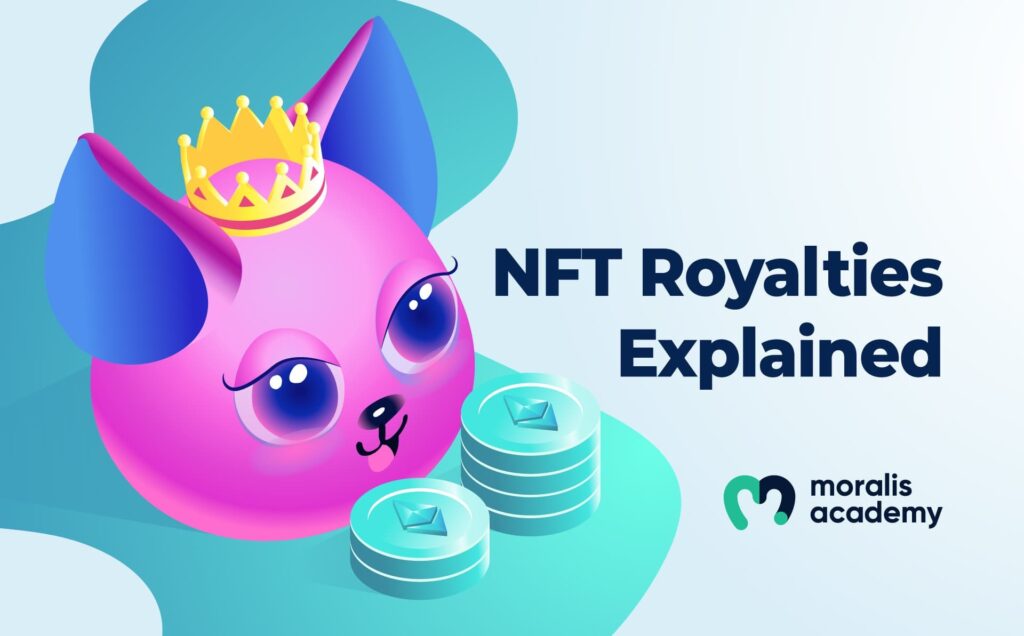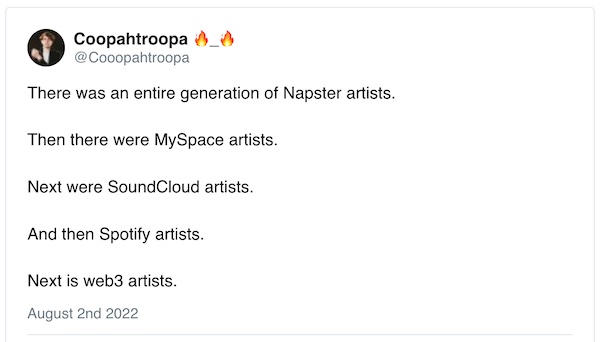One bright spot in bear markets is knowing that the seeds of the next crypto bull run are incubating. Beneath the surface of the fear and negativity perpetuated in the media exists dedicated teams of Web3 founders, developers, and venture capitalists striving to create. Most importantly, their new creations and enhancements to existing projects will be the prime movers of the next bull run.
Bear markets provide excellent opportunities to build wealth and better tech. It is when builders can focus on building, and investors can take a breather from trading and start researching the next big trend that will drive the coming crypto bull run. It's not easy predicting the future, but the opportunities are there. Projects are already percolating beneath the surface and waiting for researchers to discover them. Furthermore, this article outlines some trends and categories in which projects are likely to emerge. The next step for investors is to find the top projects within these sectors.
The Next Crypto Bull Run - DeFi and NFTs
The last crypto bull run saw the rise of decentralized finance (DeFi) and non-fungible tokens (NFTs). In fact, they were two factors significantly driving the bull market. But with the slowdown, developers working on these projects have time to refine and retest for a better product market fit in the future. Until the next crypto bull run materializes, knowing how to invest during a crypto bear market is hugely beneficial. Furthermore, by understanding crypto crashes and what causes them, you'll be better prepared for the next one.
Now, without further ado, let's dig into one of the categories that hugely impacted Web3 during the last bull run - the DeFi (decentralized finance) sector!
Decentralized Finance
DeFi is an open financial system that enables participation from any individual anywhere in the world. That's quite a contrast to traditional finance. In the traditional finance system, big banks and state governments still control the walled garden known as centralized finance (CeFi). In this system, central authority has the final say in who gets to participate.

For instance, in the 2008 financial crisis, the well-heeled and politically connected got handsome loans and bailouts regardless of the moral hazards their risky debt instruments inflicted on society. But for the everyday homeowners? They lost their homes when the bubble burst.
DeFi and the Next Bull Run
DeFi lending protocols shun this type of preferential treatment and gatekeeping. They offer similar financial services to CeFi but are open to anyone with an internet connection and a crypto wallet. Furthermore, the primary differences with DeFi are that it's permissionless, transparent, and trustless. Unlike the mysterious dealings in traditional finance, because of transparency, users can peel back the layers like never before to see the inner workings of the DeFi platforms they like.
DeFi can't offer everything that centralized lending has to offer. But it can shore up inefficiencies in traditional finance by tapping into the multitude of creative minds working in Web3. Decentralized protocols open up a brave new world for financial innovation. With opportunities and utility abounding with new ways to borrow or lend money, DeFi has the potential to come roaring out of the bear market and help lead the next bull run in crypto.
The Role of NFTs
The cynical mind will say, "what's so great about NFTs?". After all, aren't they just over-hyped JPEGs? How could they lead the next bull run? It's true. Pixelated punks, apes, and outrageously priced digital art by Beeple ruled the NFT headlines during the last bull market. But it's only the beginning. High-priced JPEGs make headlines, but digital ownership is the actual utility NFTs provide.

When you buy a collectible from a physical store, you own it. That real-world asset is what's called "non-fungible". However, before NFTs came along, people could still purchase digital collectibles. But the company selling the digital items typically stores them on their servers. On the other hand, with NFTs, the collectible resides in a wallet that the owner controls. What's more, data is stored on the blockchain.
NFTs and the Next Bull Run
NFT technology can disrupt lots of industries and help trigger the next crypto bull run. Art, gaming, and music are at the forefront. However, the scope is not limited to these, as other industry products need new solutions that this pivotal technology can provide.
However, within the art market, making a living as an artist today is as hard as ever. The art world is comparable to a third-world country. There is a tiny group of uber-rich artists at the top while the masses wallow in the lower class. The middle class is small to non-existent.
Introducing Music NFTs
The good news for musical artists is that it's easier than ever to produce and release music to the public on various streaming platforms. The bad news is, with more democratization, it's easy to get buried beneath the mountain of other artists competing to get discovered. Besides, once an artist rises to recognition and starts to sell, record labels and streaming services stand at the ready to siphon the lion's share of the profits.

In the current model, the record label keeps most of an artist's music profits. Further, streaming services only release a small amount of the revenue to the artist. So, at the end of the day, there's not a lot of chicken left on the bone for the artist after releasing control of their creations. In the Web3 world, however, artists have new and better monetization avenues. Moreover, they can develop stronger ties with their community while retaining ownership of their music.
Do you have an interest in NFT programming? Get on the fast track to building your NFT with our NFT coding tutorials!
How Artists Profit with Music NFTs
First, in the Web3 model, artists can release music NFTs (a single or full album) and sell directly to their fanbase rather than selling via a record label. Second, they can sell exclusive membership NFTs. With membership, fans can get limited edition merchandise, VIP access to shows, and special access to the artist.

Further, they can sell revenue-sharing NFTs. This type of NFT shares a percentage of the profits from future sales with buyers. More importantly, it alleviates the artist from dealing with the bureaucracy of percentage deals with streaming services and record labels. That's because, in the past, the small percentages of sales an artist retained meant they had to be at the top of the food chain to do art full-time. However, in the Web3 model, artists can build a following without being bound to a platform or the traditional advertising model as a revenue stream. More importantly, with NFTs, an artist can leverage a tiny fanbase to get paid doing what they love. Even 100 rabid fans are enough to sustain an artist since they can choose what percentage of present and future sales they will give away.
Despite the reputation NFTs got from their volatile beginnings, teams in the space are working to bring the sector to its full potential. Furthermore, NFT technology is leading the way to a new world of digital ownership and could usher in the next crypto bull run.
Web3 Gaming vs Traditional Gaming
Another sector that is likely to fuel the next bull run is Web3 gaming. It operates differently than standard video gaming. With traditional games, players pay upfront or can make monthly payments to play. But, regardless of the game that they're playing, the in-game items don't belong to them. The game server stores these assets. So, if the player moves to another game or stops paying to play, they lose control over their in-game purchases.
Furthermore, game studios usually apply strict terms of services that disallow players from engaging in money trading. Such policies prevent gamers from monetizing the many hours they spend playing a game. To sum up, the current profit model excludes gamers from participating in any "value adds". Moreover, profits remain in the company's hands.
Web3 Games and NFTs
Notably, the gaming industry is more profitable than all the media sectors combined. Furthermore, until NFTs, players weren't part of that enormous profit equation. Even though NFTs offer a way out of that closed system, gamers themselves are proving to be their own worst enemies by resisting the inevitable inclusion of NFTs in their gaming universe. The gaming market is nonetheless ripe for disruption.

Because of verifiably owned NFTs, players can buy, sell, and trade their in-game assets. Such opportunities will ultimately create more innovation for games and gamers. Furthermore, Web3 games are already here, but most lack the level of quality that traditional gamers demand. Nonetheless, keep an eye on Web3 gaming and associated in-game NFT items. As the games become more playable and develop stronger communities, they can help drive the next crypto bull run.
Blockchain Scaling Problems
Within the blockchain sector, there is a desperate push for better scaling solutions to handle an ever-increasing transaction throughput. In the last bull market, there was intense interest and speculation around alternative layer-1 solutions such as Solana. But a lot of this interest surfaced because Ethereum wasn't yet in a position to scale quickly enough to handle the influx of traffic from the bull run.

To learn more about Solana, read one of our recent blog articles. Furthermore, find out why developers build on Solana, the top five Solana projects, and how Rust & Solana work.
Solana is popular, but while alternative layer-1 blockchains posed as "Ethereum killers" due to their speed and throughput, their consistent downtime during high-demand periods left many users disgruntled. Moreover, critics of alternative layer-1 solutions contend that their failure looms because they're only faster than Ethereum when working at a small scale.
Enter Layer-2 Solutions
Such criticisms of alternate layer-1 blockchains drove developers to find another solution to Ethereum's scaling problems - layer-2s (L2s). These solutions provide high decentralization and high throughput (and, therefore, scaling) without losing Ethereum's high level of security.

Layer-2 solutions such as StarkNet and zkSync can bundle thousands of transactions into one and post it to the main chain (Ethereum). This action lowers transaction costs substantially while increasing speed and the total transactions that Ethereum can handle. In sum, layer-2 solutions provide speed while piggybacking off the main chain's robust security. More importantly, without L2s, blockchains are likely impossible to scale to their full potential - at least in the near term. Thus, L2s will enable a host of use cases, and by providing higher operating standards for Ethereum, they can help usher in global adoption.
Layer-2 solutions such as StarkNet, zkSync, Optimism, Polygon, and Arbitrum, are already in active development and are demonstrating significant progress. As this incredible technology bleeds into the mainstream, it's likely to become Ethereum's backbone and a driver of the next bull run.
The Next Crypto Bull Run - Conclusion
As painful as they are to the pocketbook, bear markets provide a slow, serene time for developers to stay focused and make tremendous progress. The crypto tourists, fly-by-night speculators, and distractions of outrageous gains are gone. So, now is the time for those dedicated to Web3 to put their heads down and get building.

To be ready for the next bull run, we'll need a UX comparable to the Web2 experience. We also need Ethereum to complete The Merge and move to proof-of-stake (PoS). Additionally, getting layer-2 solutions fully operational will provide a base layer of support to L1 blockchains which can fuel mass adoption by offering higher throughput.
No one knows precisely when the next bull market will kick off, but we can speculate which trends will drive it. Thankfully, some of the most brilliant people worldwide are migrating to Web3. More importantly, these developers, creators, and artists are bringing the necessary skills to help build our way out of the present bear market.
Will you be ready for the next crypto bull run? Investing is one way, but building Web3 projects is another. Enroll at Moralis Academy today. Their instructors will guide you every step of the way so you can become a blockchain expert!





